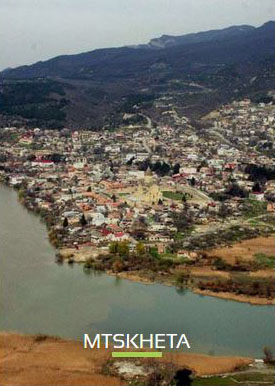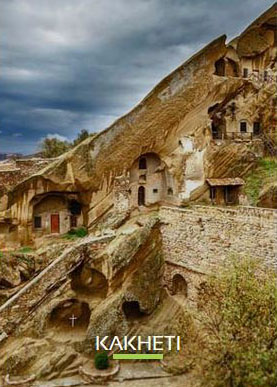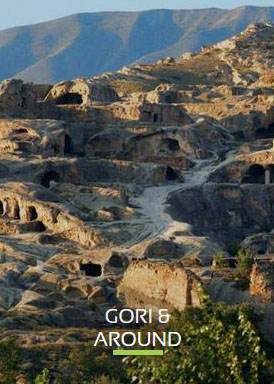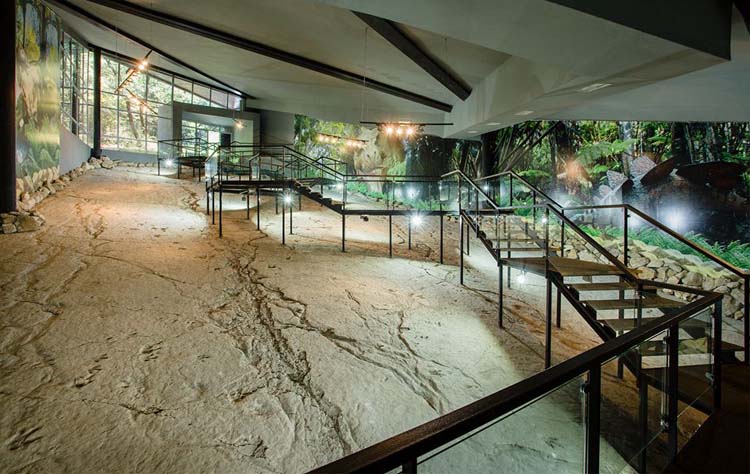
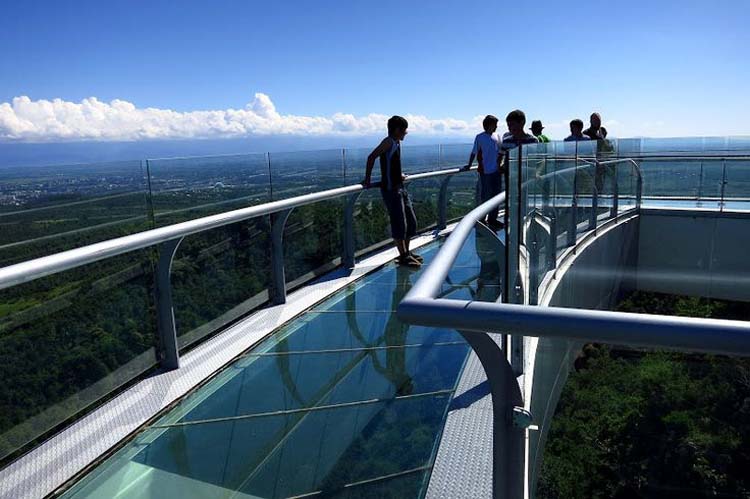
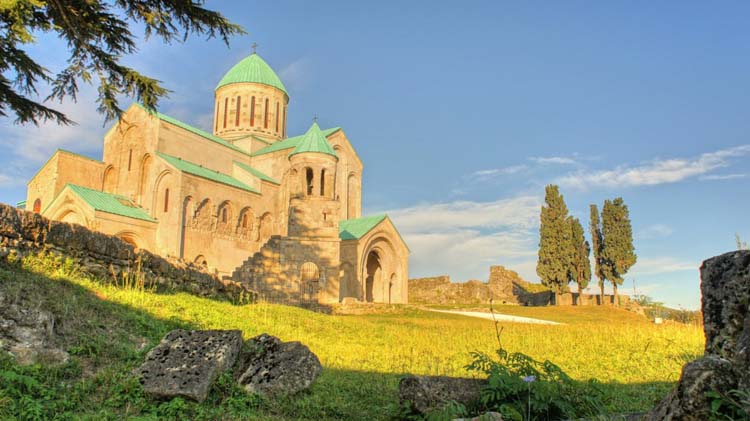
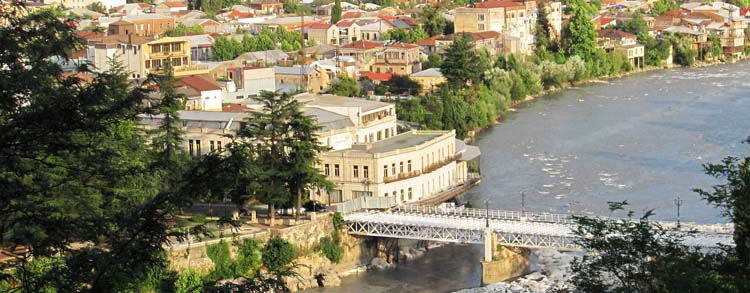

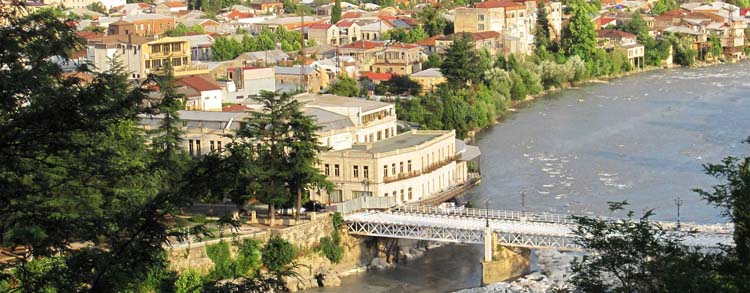

Western Capital
KUTAISI & AROUND
Kutaisi, boasting a population of 250,000, stands as the third largest city in Georgia. Nestled in the western region of the country along the banks of the Rioni River, this city holds deep historical roots, spanning an impressive 3,500 years according to both historical records and mythological narratives. The earliest references to Kutaisi appear in ancient Greek legends recounting the exploits of the Argonauts, in which the city was denoted as "Aia," and the Rioni River was called "Fazis." The Rioni River served as the pathway through which the Argonauts embarked on their journey from the Black Sea to reach Kutaisi. In 1984, this same route was retraced by Tim Severin, who successfully navigated to Kutaisi by boat.
By the 8th century, Kutaisi ascended to the status of the capital of western Georgia, a role it held for a significant period. Presently, it stands as the central city of the Imereti region.
Kutaisi, with its captivating charm, is graced with a plethora of cultural and tourist attractions that warrant exploration.
ROUTE MAP (ONE WAY)
Total Length: 356km; 6.5 hours without traffic.
And here is the link for directions on Google Maps: https://goo.gl/maps/Q2HuxSe2m4x
BAGRATI CATHEDRAL
The Cathedral of the Dormition, also known as the Kutaisi Cathedral or Bagrati Cathedral, is an architectural marvel from the 11th century situated in the city of Kutaisi within the Imereti region of Georgia. A gem of medieval Georgian architecture, the cathedral has endured significant damage over the course of centuries. A gradual restoration process, which commenced in the 1950s and culminated in extensive conservation efforts by 2012, brought it to its current state.
Prominently situated on the Ukimerioni Hill, the cathedral stands as a distinctive landmark in the heart of central Kutaisi. In 1692, the Ottoman troops that had invaded the Kingdom of Imereti triggered an explosion that devastated Bagrati Cathedral, resulting in the collapse of its cupola and ceiling. Subsequent to this incident, the cathedral underwent diligent conservation and restoration endeavors, including archaeological studies, starting in the 1950s.
In recognition of its historical and cultural significance, Bagrati Cathedral, along with the Gelati Monastery, achieved inclusion in UNESCO's prestigious World Heritage Site list in 1994, forming a single entity. The year 2001 saw the transfer of ownership of the cathedral from the Georgian state to the Georgian Orthodox Church. While it currently has limited use for religious services, the cathedral remains a focal point for numerous pilgrims and tourists. It has also become an emblematic representation of Kutaisi, serving as a principal attraction for visitors to the city.
GELATI MONASTERY
Gelati, situated in the Imereti region of western Georgia near Kutaisi, is a medieval monastic complex of profound significance. This creation of the Georgian Golden Age was established in 1106 by King David IV of Georgia and has garnered UNESCO recognition as a World Heritage Site. Throughout history, Gelati held a prominent role as one of Georgia's foremost hubs for culture and intellect.
Among its achievements, Gelati hosted an Academy that employed some of the most eminent Georgian scientists, theologians, and philosophers. Many of these distinguished figures had previously contributed their expertise to various orthodox monasteries beyond Georgia's borders. The rich legacy of Gelati Monastery includes the preservation of numerous murals and manuscripts dating from the 12th to the 17th centuries.
Outside Kutaisi you should visit:
PROMETHEUS CAVE
Unearthed in the Imereti region in 1984, Prometheus Cave stands as one of Georgia's captivating natural marvels, offering its visitors an array of natural formations such as stalactites, stalagmites, curtains, petrified waterfalls, cave pearls, subterranean rivers, and lakes.
The cave's 1060-meter path has been refurbished, with renovations completed in the summer of 2012. Additionally, visitors have the opportunity to partake in a 280-meter boat journey along an underground river, although this is subject to seasonal availability based on water levels. To access Prometheus Cave, visitors start from the Visitor Centre located in the village of Kumistavi within the Tskaltubo Municipality.
Working Hours: 10:00 - 17:00, every day except Mondays, all year round.
Entrance fee: Adult - 7 GEL; Student – 3, 5 GEL. (approximate info, prices might have changed)
Ticket price includes guide service.
Guide service is in Georgian, English, Russian and German languages.
Additional services: VIP service - 1-10 persons – 100 GEL added ticket price; 11-20 persons – 200 GEL added ticket price. Civil marriage signing ceremony - 100 GEL; Boat service - 10 Gel; Audio guide - 7 GEL
Conference hall (50 persons) - 100 GEL.
Getting there: From Kutaisi its 20 km (30 min) drive.
Minibus from Didube bus terminal to Kutaisi leaves every day - 10 GEL, 3 hr;
Minibus from Kutaisi central bus terminal, Tskaltubo overpass and adjacent area of Red bridge to Tskaltubo leave every day, several times a day - 1 GEL, 30 min.
Contact info: Lika Kapanadze, Visitor Service Specialist
Tel: 577 10 14 17;
E-mail: likakapanadze2014@gmail.com
SATAPLIA NATURE RESERVE
Situated within the Tskaltubo municipality of the Imereti region, the Sataplia Managed Reserve is renowned for hosting the footprints of Herbivorous and Raptor dinosaurs spanning various epochs. The distinct Sataplia dinosaurs, referred to as "Satapliazaurus," set themselves apart from their European counterparts.
Originally established in 1935, the reserve's primary aim was to safeguard both the Sataplia Cave and the dinosaur footprints discovered within its vicinity. Recently, this attraction has undergone an appealing refurbishment of its visitor center dedicated to the Sataplia Cave.
Named after the Sataplia Mountain, the cave draws its name from the local custom of harvesting honey from the bees that inhabit the southern slope of the mountain. The term "Sataplia" translates to 'place of honey.'
The reserve offers easily navigable pedestrian routes, perfect for family outings. These paths allow visitors to explore the conservation site of the dinosaur footprints, an exhibition hall, unique karst caves, the Colchic Forest, and an area dedicated to the habitat of wild bees. A panoramic view of the Imereti region can be enjoyed from the glass-enclosed panoramic structure.
With a length of 900 meters, height of 10 meters, and width of 12 meters, the Sataplia Cave boasts illuminating displays of stalactites and stalagmites.
The Imereti Caves Protected Areas Administration and Visitor Center can be found in the village of Banoja within the Tskaltubo municipality.
Working hours: 10:00 - 17:00, every day except Mondays. All year round. Due to visitors' safety walking on panoramic view is not allowed in rainy and snowy weather.
Entrance fee: Adult - 6 GEL; Student - 3GEL; Children under 6 - free entrance. (approximate prices)
Ticket price includes guide service.
Guide service is in Georgian, English and Russian languages.
Additional services: VIP service -1-10 persons – 100 GEL plus ticket price; 11-20 persons – 200 GEL plus ticket price. Civil marriage signing ceremony: 100 Gel
Getting there: From Kutaisi to Sataplia 7 km (30 min). Minibus from Didube bus terminal to Kutaisi leaves every day - 10 GEL, 3 hr;
Mini bus N 45 leaves every day except Tuesday from Kutaisi Central Agricultural Market to Sataplia (1 GEL, 50 - 40 min.)
Contact info: Lasha Kikvidze, Visitor Service Specialist
Tel: 595 08 60 59;
E-mail: lashakikvidze888@gmail.com
E-mail: lashakikvidze888@gmail.com
TSKALTUBO RESORT
Tskaltubo, a renowned health resort, has gained its reputation from its abundant warm Radon mineral springs, with a natural temperature ranging between 33 to 35 degrees Celsius. Since the 1940s, this resort has garnered immense popularity throughout the Soviet Union due to its remarkable therapeutic qualities.
This exceptional water source is believed to possess the ability to alleviate a variety of health concerns, including:
· Cardiovascular system ailments
· Disorders of the locomotor system
· Nervous system irregularities
· Gynecological disorders
· Skin and endocrine diseases
· Metabolism disturbances and more
The resort provides a diverse array of water-based therapies, complemented by physiotherapy and massage services. Highly trained medical professionals prescribe tailor-made treatment plans for every visitor, ensuring personalized care.
For additional details, you can explore their official website or get in touch with them directly.
Tskaltubo Spa Resort
Rustaveli ave. 23, Tskaltubo, Georgia
Tel: +995-436-221417 / +995-599-091610
E-mail: reception@tskaltubosparesort.ge / reservation@tskaltubosparesort.ge / info@ghs.ge
RESORT SAIRME
Sairme Health Resort is situated to the south of Kutaisi, at an elevation of 950 meters above sea level, falling under the jurisdiction of Bagdati municipality. This destination boasts a unique location, curative springs, an ecologically pristine environment, and breathtaking natural surroundings. Positioned within a mountainous region of the subtropical zone, Sairme offers a tranquil retreat.
While it has been recognized as a significant resort area for several decades, Sairme only attained an acceptable level of tourist infrastructure in 2011. The establishment features a well-equipped spa center that caters to various sanitation procedures.
Visitors can also avail themselves of the on-site polyclinic, which provides therapeutic, cardiological, and urological services. This modern clinic boasts cutting-edge laboratory facilities and ultrasound capabilities.
Mineral Waters The balneological resort of Sairme has been aware of the medicinal attributes of its mineral and thermal springs since the 19th century. These springs emerge as several small outlets across the resort, distinguished by their distinct chemical compositions and therapeutic properties. Rigorous chemical analyses have resulted in specific identification and classification for each spring.
Here are some benefits attributed to different springs:
· Pump room № 1: Effective for urinary calculus issues, chronic kidney disease, salt diathesis, and prophylactic treatment.
· Pump room № 2: Suitable for bile-pebble diseases, chronic cholecystitis, non-aggravated chronic hepatitis, and preventive purposes.
· Pump room № 3: Useful for metabolic imbalances like diabetes, salt diathesis, arthritis, and osteochondritis.
· Pump room № 4: Beneficial for gastrointestinal conditions, including peptic ulcers, varying acidity levels, and colitis.
Thermal Baths The thermal spring, emanating from a depth of 1500 meters, maintains a temperature of 43 degrees Celsius. These thermal baths are sought after for treating various ailments:
· Conditions related to the bone and joint system (Arthritis, arthrosis, osteochondrosis)
· Neurological system issues (Neurosis, neural-circular dystonia, circulatory problems)
· Non-insulin dependent diabetes
· Dermatological concerns (Allergic skin conditions, psoriasis)
· Gastrointestinal problems (colitis, allergies, with colon cleansing/therapy available)
· Chronic urinary-genital system disorders (non-acute forms of cystitis, prostatitis, etc.)
For more detailed information, kindly visit their official website or directly get in touch with them.
Resort Sairme
Phone: (+995 32) 240 45 45
E-mail: info@sairme.com.ge


 ქართული
ქართული
 Русский
Русский

